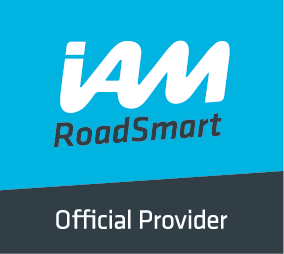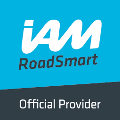Forward thinking as the clocks go back from the IAM
As British Summer Time comes to an end, this week’s tips from the IAM’s head of driving standards, Peter Rodger, are looking at what you can do to ensure your journey is as safe as possible in the dark. Here are our latest tips to see you through.
- With fog expected during mornings and evenings, it’s important that you keep your windows clear of ice and frost throughout. Use a good quality windscreen washer fluid to keep them clean, and keep the reservoir topped up.
- As you will be using your dipped headlights more often it’s important you make sure they are working properly. The same applies for all other car lights, indicators and tyres too – make sure you check the tread depth regularly. If any of these need replacing, do so as soon as possible. A spare set of light bulbs is a very worthwhile investment for your car.
- Automatic headlamp systems do not always put dipped headlamps on in foggy weather conditions, so you may need to switch them from an auto to manual setting. Remember, you don’t need to wait until it’s completely dark before you switch on your dipped headlights – you may need to use them in reduced daylight conditions too.
- Where there are no street lights or you are driving on an empty stretch of road in seriously reduced visibility, switch on your full beam to help you see further ahead. However, you mustn’t use your full beam during the day even in poor visibility as you risk dazzling other road users.
- Look out for vulnerable road users in the dark including motorcyclists, cyclists and pedestrians. Take particular care when driving near schools in the late afternoon when children are travelling home – see and be seen at all times.
- Pedestrians are not easily spotted when they wear dark clothing. Keep your eyes peeled and avoid speeding when your vision is reduced in both dark and bad weather conditions.
- Keep an eye out for reflective road signs and motorway studs that help you drive in poor light. Use these to guide you with your journey.
- Judging the speed of vehicles is difficult in the dark – increase the distance between you and the car in front of you. If you cannot see ahead, you must slow down to give yourself more time to react to a potential hazard.
It might sound obvious, but you cannot drive the same way in the dark as you would in daylight – but that’s what a lot of people do. Make allowances for your own abilities in darkness; your eyes take time to get used to the dark. And be aware others might not be as careful as you, and might not be wearing reflective or bright clothing as they should do. Take on the responsibility of looking out for others, and your journey will give you a warm glow inside – even if it’s chilly outside.
Notes to editors:
- Peter Rodger is the IAM’s chief examiner.
- The IAM is the UK’s largest independent road safety charity, dedicated to improving standards and safety in driving and motorcycling. The commercial division of the IAM operates through its occupational driver training company IAM Drive & Survive. The IAM has more than 200 local volunteer groups and over 90,000 members in the UK and Ireland. It is best known for the advanced driving test and the advanced driving and motorcycling courses. Its policy and research division offers advice and expertise on road safety.
Media contacts:
IAM Press Office – 020 8996 9777press.office@iam.org.uk

